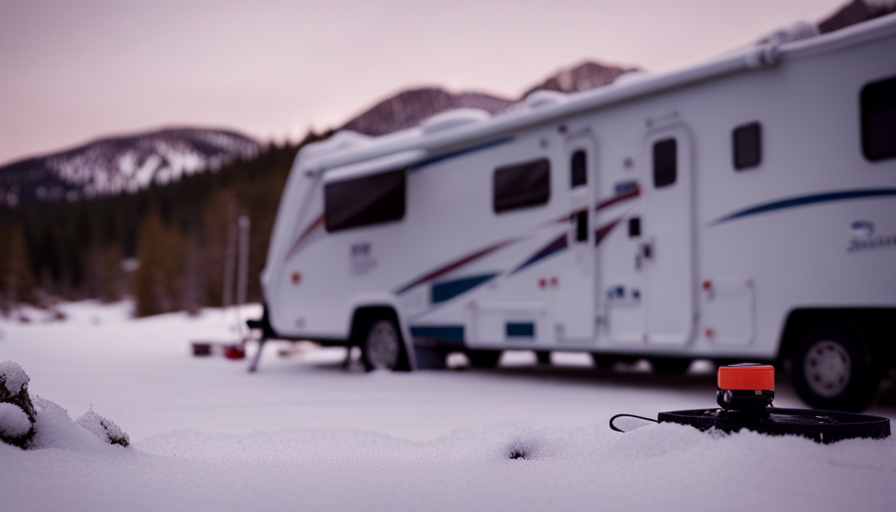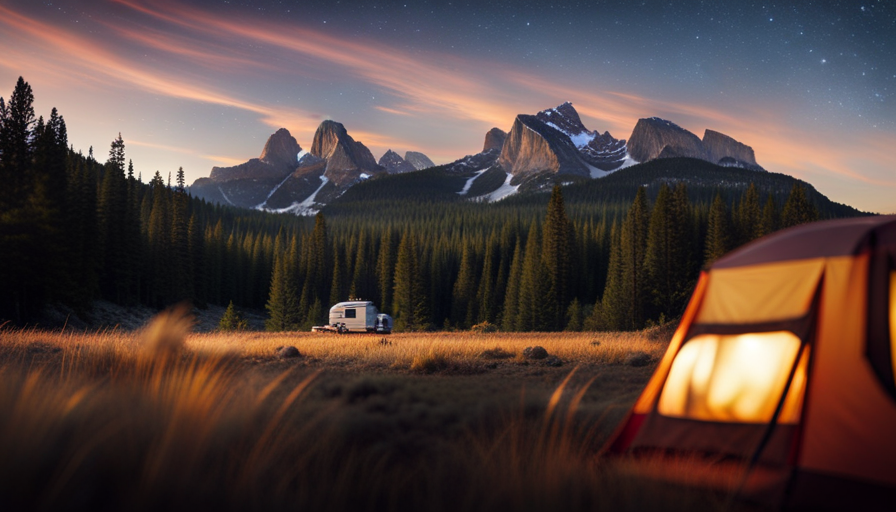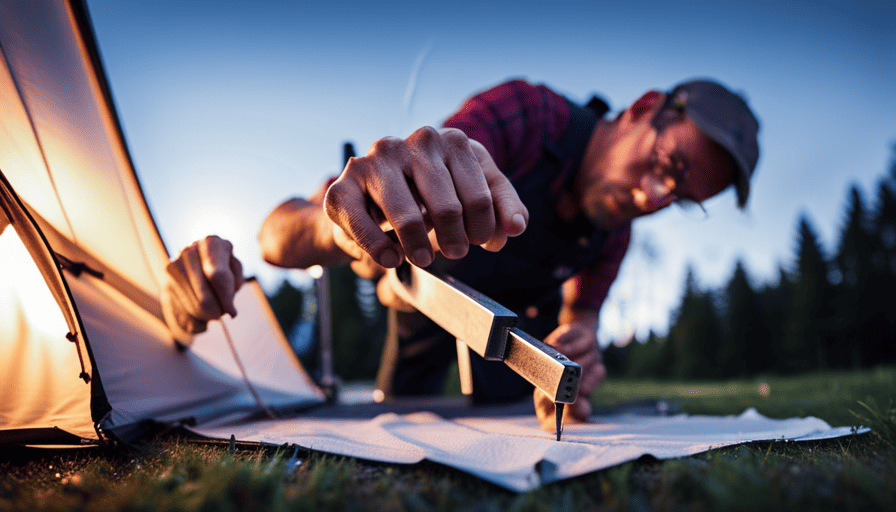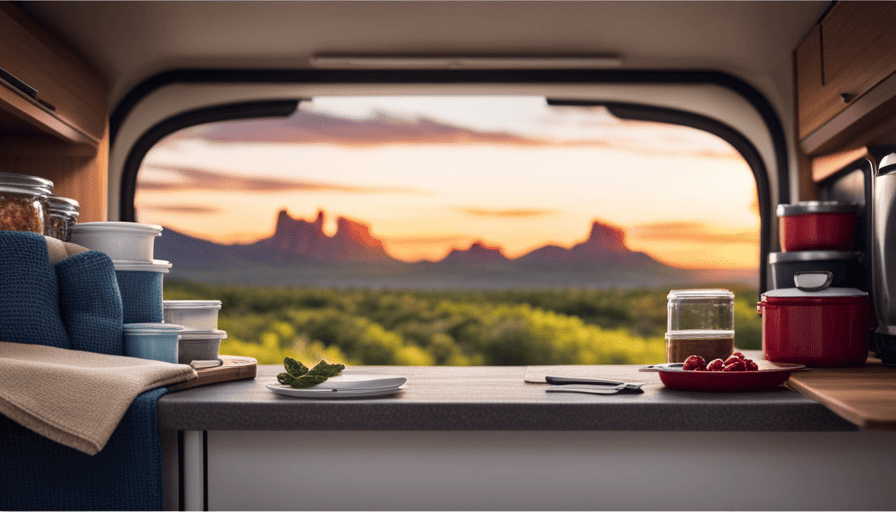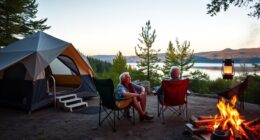Preparing your RV camper for winter is crucial to protect it from harsh winter conditions. As experienced RV enthusiasts, we understand the importance of taking the necessary steps to maintain our beloved mobile home in top condition during the colder months. In this article, we will guide you through the essential steps for winterizing your RV, providing you with the knowledge and expertise needed to successfully carry out this vital maintenance task.
From preparing the water systems to insulating the RV and protecting the exterior, we will cover every aspect of winterizing your camper. Additionally, we will discuss how to winterize your appliances and provide tips for storing your RV properly. We understand that emergencies can arise, even during the winter, so we will also offer advice on preparing for unexpected situations.
By following our comprehensive guide, you can rest assured that your RV will be safeguarded from freezing temperatures, potential damage, and costly repairs. So, let’s dive in and learn how to winterize your RV camper like a pro!
Key Takeaways
- Draining and flushing the water systems and using antifreeze solution is crucial for preventing freezing and damage to pipes.
- Proper insulation of the RV, including walls, windows, floors, and ceilings, helps keep warm air in and cold air out.
- Regular maintenance and inspection of appliances, such as the refrigerator, water heater, and furnace, is necessary to prevent damage or malfunctions during winter.
- Proper storage of the RV during winter, either in covered storage facilities or using an RV cover, is essential to prevent damage from harsh weather conditions.
Preparing the Water Systems
Before you start winterizing your RV camper, make sure you drain and flush the water systems thoroughly. This is an important step to prevent any water from freezing and causing damage to your pipes.
Start by turning off the water supply and opening all the faucets, including the outdoor shower and toilet. Next, locate the drain valves for both the fresh water tank and the hot water heater. Attach a hose to the drain valve and direct it towards a suitable drainage area. Open the valves and let the water flow out completely.
Once the water is drained, it’s time to protect your pipes with antifreeze solution. Choose an RV-specific antifreeze that’s safe for drinking water systems. Begin by bypassing the water heater to avoid wasting antifreeze. Connect a section of tubing to the inlet side of the water pump and place the other end into a container of antifreeze. Turn on the pump and open each faucet one at a time, starting from the closest to the pump and moving towards the farthest. Allow the antifreeze to run until it comes out of each faucet, ensuring that all the water lines are thoroughly filled with antifreeze.
With the water systems prepared, it’s time to move on to insulating the RV.
Insulating the RV
To make sure you stay cozy during those chilly nights, start by insulating your home-on-wheels. Proper RV insulation techniques can make a significant difference in keeping the cold air out and the warmth in.
Here are four key steps to effectively insulating your RV:
-
Choose the right insulation materials: Opt for materials that provide the best insulation value, such as fiberglass batts or spray foam insulation. Consider factors like R-value, moisture resistance, and ease of installation.
-
Insulate the walls: Apply insulation to the interior walls of your RV, covering any gaps or exposed areas. This helps prevent heat loss and keeps the cold air from seeping in.
-
Insulate the windows: Use thermal curtains or window insulation film to create an additional barrier against the cold. This helps to reduce drafts and heat transfer through the windows.
-
Insulate the floors and ceiling: Install insulation between the floor joists and insulate the ceiling to minimize heat loss through these areas.
By following these RV insulation techniques and choosing the right insulation materials, you can create a warm and comfortable living space for those winter adventures.
Next, let’s move on to protecting the exterior of your RV…
Protecting the Exterior
As you fortify your home-on-wheels against the winter chill, don’t forget to shield the exterior, ensuring your beloved rolling sanctuary is wrapped in a protective armor.
Winterizing your RV camper requires attention to detail, especially when it comes to protecting the exterior components. Start by preparing your awnings for the harsh winter conditions. Clean them thoroughly, removing any dirt or debris that could cause damage. Once they’re clean and dry, apply a protective coating to prevent them from cracking or fading in the cold temperatures. This’ll help extend their lifespan and keep them looking their best for many seasons to come.
Another important aspect of protecting the exterior is taking care of your tires. Cold weather can cause tire pressure to drop, so make sure to check and adjust the pressure regularly. Additionally, consider investing in tire covers to shield them from the elements. These covers’ll prevent UV damage and keep the tires from cracking. It’s also a good idea to park your RV on a level surface to avoid unnecessary stress on the tires during winter storage.
Now that you’ve fortified the exterior of your RV camper, it’s time to move on to winterizing the appliances.
Winterizing the Appliances
Now, let’s dive into how you can make sure your appliances are ready to withstand the winter months. It’s important to inspect and maintain your RV’s appliances before the cold weather sets in to prevent any damage or malfunctions. Here are some key steps to winterize your appliances:
-
Inspect the refrigerator: Start by removing all the food and defrosting the freezer. Clean the interior thoroughly and leave the doors open to prevent mold and mildew. Check the seals for any cracks or gaps and replace them if necessary.
-
Maintain the water heater: Drain the water heater and remove any sediment or debris. Turn off the power and gas supply to prevent accidental activation. Cover the heater with an insulated blanket or use a specialized water heater kit to protect it from freezing temperatures.
-
Check the furnace: Clean or replace the furnace filter to ensure proper airflow. Inspect the exhaust and intake vents for any blockages. Test the furnace to make sure it’s functioning correctly and producing sufficient heat.
Taking these steps will help safeguard your appliances during the winter months.
In the next section, we’ll discuss how to store your RV to further protect it from the elements.
Storing the RV
When it comes to protecting your beloved home on wheels, it’s time to find a cozy nest for your adventurous soul.
Storing the RV properly during the winter months is crucial to prevent any damage caused by the harsh weather conditions. There are several options for RV storage that you can consider.
One option is to store your RV in a covered storage facility. This provides protection from the elements and keeps your RV safe from potential theft or vandalism.
Another option is to use an RV cover. These covers are specifically designed to fit your RV and provide an extra layer of protection. They’re made from durable materials that can withstand the winter weather. When choosing an RV cover, make sure it’s the right size for your RV and provides adequate protection. Additionally, be sure to properly secure the cover to prevent it from blowing off during storms.
As you prepare for emergencies, it’s important to have a plan in place for any unforeseen circumstances.
Preparing for Emergencies
When it comes to preparing for emergencies in our RV, there are a few key points that we need to keep in mind.
First and foremost, we should stock up on emergency supplies such as non-perishable food, water, and essential medications.
Additionally, it’s crucial to install carbon monoxide and smoke detectors to ensure our safety while on the road.
Lastly, we must have a plan in place for snow removal on the roof to prevent any potential damage or accidents.
By taking these precautions, we can feel confident that we’re prepared for any unexpected situations that may arise during our RV adventures.
Stock Up on Emergency Supplies
Make sure to gather all the necessary emergency supplies to ensure you’re well-prepared for any unexpected situations during the winter months in your RV camper. Here’s a list of essential items to have on hand:
-
Emergency Food: Stock up on non-perishable food items that can sustain you and your family for at least a week. Items like canned goods, dried fruits, and protein bars are ideal choices.
-
Winter Survival Kit: Include items such as extra blankets, warm clothing, and sleeping bags to keep everyone comfortable and warm. Don’t forget to pack a portable heater and extra fuel as well.
-
Flashlights and Batteries: In case of power outages, having multiple flashlights with extra batteries is crucial. Opt for LED flashlights as they provide bright light and have a longer battery life.
-
First Aid Kit: Be prepared for any injuries or illnesses by having a well-stocked first aid kit. Include items like bandages, antiseptic ointment, pain relievers, and any necessary prescription medications.
Ensuring you have these emergency supplies will give you peace of mind during the winter months in your RV camper. Additionally, it’s important to install carbon monoxide and smoke detectors to further enhance your safety.
Install Carbon Monoxide and Smoke Detectors
Now that we’ve stocked up on emergency supplies, let’s move on to the next important step in winterizing our RV camper: installing carbon monoxide and smoke detectors. These devices are crucial for the safety of everyone inside the camper, as they can alert us to the presence of dangerous gases and potential fire hazards.
Carbon monoxide dangers are real and can be fatal, especially in enclosed spaces like an RV. By installing carbon monoxide detectors, we can ensure that we’re immediately alerted if levels become dangerously high.
Additionally, smoke detectors are essential for early fire detection, giving us precious time to evacuate and prevent a potential disaster. Remember to install these detectors in multiple locations throughout the camper, including the sleeping areas and kitchen.
With our safety in mind, let’s now transition to the next section where we discuss the importance of having a plan for snow removal on the roof.
Have a Plan for Snow Removal on the Roof
To ensure your safety during the winter months, it’s important to have a plan for efficiently removing snow from the roof of your mobile home. Snow accumulation on the roof can lead to significant damage if not properly managed. Here are some snow removal techniques and tips to prevent roof damage:
-
Use a roof rake: A roof rake is a long-handled tool specifically designed for removing snow from the roof. It allows you to safely stand on the ground while clearing the snow.
-
Clear the gutters: Ensure that the gutters are clear of leaves and debris before the snowfall. This will prevent ice dams from forming and water from seeping into the interior of your RV.
-
Be cautious with shovels: If using a shovel to remove snow, be gentle to avoid damaging the roof. Avoid using metal shovels that may scratch or puncture the roof.
-
Hire professionals if needed: If the snow accumulation is too heavy or you’re unable to safely remove it yourself, consider hiring professionals who specialize in snow removal.
By following these techniques and tips, you can effectively and safely remove snow from your RV camper’s roof, preventing potential damage and ensuring a worry-free winter.
Frequently Asked Questions
How do I properly drain and clean the water tanks in my RV camper before winterizing?
To properly drain and clean the water tanks in our RV camper, we employ a technique that ensures every last drop is removed. We start by opening the drain valves and carefully emptying the tanks, making sure to remove any sediment or debris.
Then, we use a specialized cleaning solution to thoroughly clean the tanks, eliminating any bacteria or odors. This meticulous process ensures that our tanks are pristine and ready for winter storage.
Can I use regular household insulation materials to insulate my RV camper, or do I need specialized insulation products?
Using regular insulation materials for RV camper insulation can be a cost-effective option. However, there are some drawbacks to consider. Regular household insulation materials may not be as effective in insulating against temperature extremes and moisture as specialized insulation products designed specifically for RV campers. Specialized insulation products, such as foam board insulation or reflective insulation, are specifically engineered to provide optimal insulation and moisture resistance for RVs. Ultimately, the choice depends on your budget and the level of insulation you desire for your RV camper.
What steps should I take to protect the exterior of my RV camper from ice and snow during the winter?
To protect the exterior of our beloved RV camper from the brutal winter elements, we take some serious winterizing steps.
First, we cover every inch with a thick layer of specialized RV skirting, ensuring no snow or ice can penetrate.
Then, we meticulously seal any cracks or gaps with weather-resistant caulking.
Finally, we install heated water pipe wraps to prevent freezing and potential damage.
With these precautions, our RV camper is a fortress against the harshest winter conditions.
Is it necessary to remove all appliances from my RV camper before winterizing, or are there certain appliances that can be left in?
When it comes to winterizing appliances in your RV camper, it’s necessary to remove certain appliances to prevent damage from freezing temperatures. Appliances such as the refrigerator, water heater, and water pump should be drained, cleaned, and stored in a safe place.
However, there are some appliances that can be left in, like the furnace or stove, as long as they’re properly prepared for winter. Proper appliance storage is crucial in ensuring the longevity and functionality of your RV camper during the winter months.
Are there any specific measures I should take when storing my RV camper for the winter to prevent damage or deterioration?
When it comes to winter storage of an RV camper, there are several preventive measures you should take to avoid damage or deterioration. Firstly, clean the camper thoroughly to remove any dirt or debris that can cause corrosion.
Next, drain all water systems and add antifreeze to prevent freezing and bursting of pipes. Don’t forget to remove all perishable items and disconnect the battery to prevent draining.
Lastly, cover the RV with a quality, breathable cover to protect it from the elements.
Can I Use the Same Steps to Winterize a Camper and an RV?
Winterizing a camper living in it can be a challenging task. However, when it comes to the specific steps required to winterize a camper and an RV, they are generally the same. Both require draining water systems, protecting pipes with antifreeze, and ensuring proper insulation. Following these steps diligently will effectively protect your camper or RV from the harsh winter conditions.
What Steps Should I Take to Winterize My RV Camper for Use in Cold Weather?
When preparing your RV camper for cold weather, there are a few important tips for winter camping to remember. First, insulate any exposed water lines to prevent freezing. Next, ensure your furnace is in good working condition and consider adding an electric space heater as a backup. Finally, check your propane levels and invest in thermal curtains for extra insulation.
Conclusion
In conclusion, winterizing your RV camper is crucial to ensure its longevity and functionality during the cold months. By properly preparing the water systems and insulating the RV, you can protect your investment and be ready for your next adventure when spring arrives.
Just as a bear hibernates during winter, your RV too needs to go into a state of rest and preservation. So, take the necessary steps and let your RV hibernate in peace until the warm sun beckons it to awaken once again.

